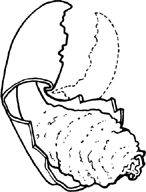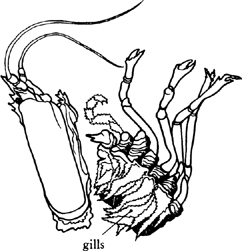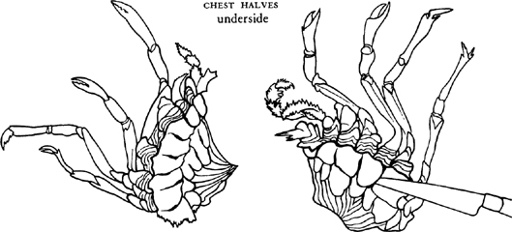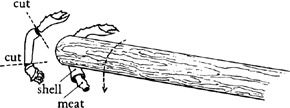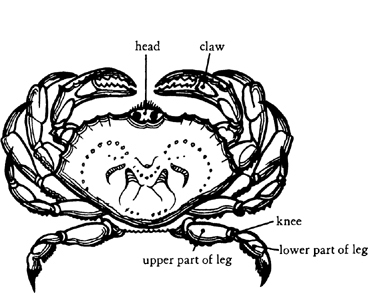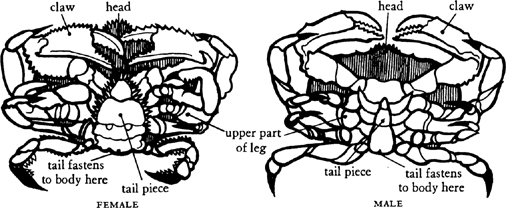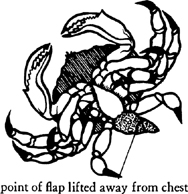Mastering the Art of French Cooking, Volume 2 (15 page)
Read Mastering the Art of French Cooking, Volume 2 Online
Authors: Julia Child

Again with scissors, |
|
| Pull chest section from its outside shell |
Cut or twist off legs where they join the chest.
Dig out meat from inside side of chest, going in between cartilaginous interstices with the point of a knife
. This is never a fast operation, but the small amount of meat you extract is the sweetest and tenderest of all.
| To remove the meat from the legs, sever them at each of their joints. |
CRABS
HOW TO CLEAN AND CUT UP RAW CRABS FOR CRAB BISQUE
Stone crabs, rock crabs, sand crabs, blue crabs, and their ilk and size are especially good for bisques because they are otherwise somewhat complicated
to eat. If you are at the seashore you can gather them yourself, or ask lobstermen please not to throw them out, as they often do, but to save all crabs for you. However you obtain them, they must be alive. Just before you are ready to clean and cut them, place them upside down in a large bowl or stoppered sink and cover with very hot water. As soon as air bubbles cease to rise, in a minute or two, the crabs will be limp and ready to work on. Your object in cleaning and cutting is to remove the main body, or chest-leg-claw portions of each crab, from the hard shell, called the carapace, and to collect the tomalley, which is the creamy substance in the chest cavity and carapace.
Turn crabs upside down. Note that female crabs have a wider tail flap than male crabs and the female’s is usually edged with hair.
Lift point of flap away from chest, then grasp flap close to the body of the crab and with a rather slow twisting movement, pull it horizontally free from the end of the crab |
|
